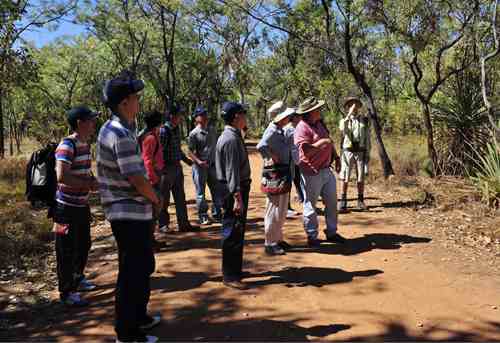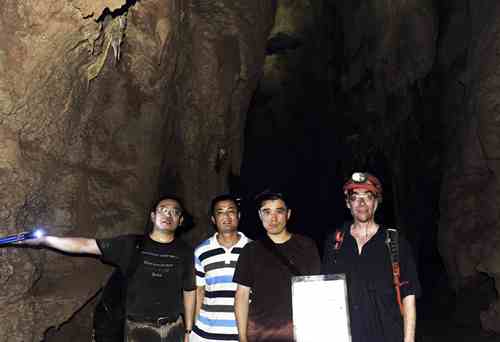Australia, a southern hemisphere country, is located on the equatorial opposite side of the East Asian continent. The history and variability of climate and environment changes over these two continents are closely linked through the cross equator airflow and moisture transportation. The study of the past climate change in opposite continent is important for understanding not only the regional climate change at present, but also the interaction of hemispheric. Institute for Environmental Research (IER), Australian Nuclear Science and Technology Organization (ANSTO), is one of the important research center for Australia's climate change study. Institute of Earth Environment CAS (IEECAS) is a famous institution for climate change study in China. In May of this year, Prof. John Dodson, the Head of IER, visited IEECAS and proposed bilateral collaborating plans.
In mid-August 2013, based on the initially proposed cooperation plans, a delegation of 6 IEECAS researchers, led by Prof. Zhisheng An and Prof. Weijian Zhou, has visited the ANSTO and. Through the discussion with the scientists from ANSTO and the University of New South Wales (UNSW) and surveying in situ, the Chinese delegates have obtained a broad views on the research facilities, techniques and the research interests of ANSTO and the UNSW, which are very important for us to establish the bilateral collaboration. Thereafter, guided by scientists from ANSTO, IEECAS scientists investigated the Northwest Territory geology of Australia, and got some preliminary understandings on the characteristic of geology, climate and ecology of Northwest Territory of Australia, providing the basis of program development for future study of paleo-climate and paleo-environmental. During this visit, the southeastern and northwestern Australia atmospheric samples were collected by Prof. Zhou and Mr. Fu with the assistance of ANSTO staff for △14C tracer study of fossil fuels.

Prof. Heijnis is introducing the monsoon rainforest in Darwin.

Surveying in Cutta Cutta Cave in Darwin
(Written by CAI Yanjun;Image by IEECAS)
 © 2015 Institute of Earth Environment,CAS
© 2015 Institute of Earth Environment,CAS  © 2015 Institute of Earth Environment,CAS
© 2015 Institute of Earth Environment,CAS